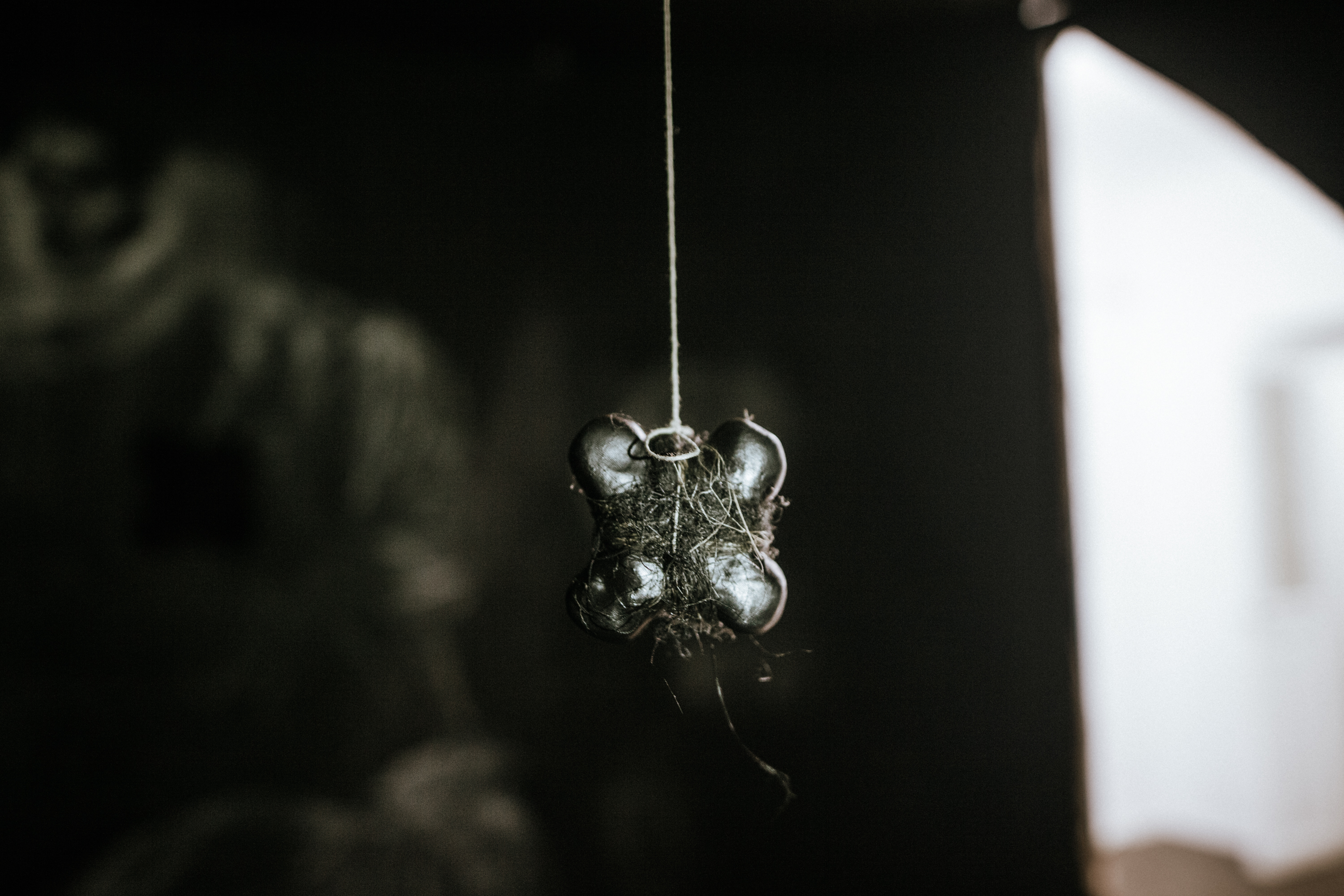Tajsa - Yesterday and Tomorrow
Krzysztof Gil
installation
2018
steel, wood, jute, canvas, board, chalk, pastel, ink, wax, soot, hair, soil, audio file
Production: Henryk gallery
Anti-Roma legislation justifying the aversion towards the Roma and legalizing their persecution started to be drawn up in Europe as early as in the 15th century. In Adam Bartosz's book Nie bój się Cygana (Do Not Fear the Gypsy) we read that the first laws were issued in Lucerne in 1471. At the close of the 15th century, the nomadic lifestyle of the Roma was also banned in Spain. In the early 16th century, under the law introduced by Roman Emperor Maximilian I Habsburg, the captured Roma were subject to torture and extermination. At that time the Roma were also legally banished from England, Denmark, Finland, France and Scotland. These persecutions in the majesty of the law reached their peak in the centuries that followed, when the Roma were literally hunted (German Heidenjachten, "heathen hunt"). The hunts assumed the shape of a battue, a source of pleasure to the hunters. There is an excerpt from a 17th-century German chronicle, which reads: “one beautiful stag was slain, five does, three sizeable wild boars, nine smaller boars, two male gypsies, one female and one baby gypsy.” It is safe to assume that similar crimes were committed frequently. After all, in the face of growing persecution of the Roma, the only place of refuge for them was the forest. These hunts remained popular in Western Europe until the 19th century and were regarded as a form of public entertainment.
It is exactly this chronicle record that has inspired the work of Krzysztof Gil. The Polish-Romani artist has produced an installation composed of a cubic shed put together from pieces of wood and fabric, alluding to traditional temporary houses erected by the Roma. Inside the room, the artist installed a panoramic painting, a white-crayon drawing depicting a scene of game display. The image, which follows the representational convention for hunting trophies, is composed of portraits of hunters dressed in modern outfits. All images used by the artist have been appropriated from the paintings of the old masters. The composition centre holds, amidst hunted game, a torso of a shut-down Roma.

